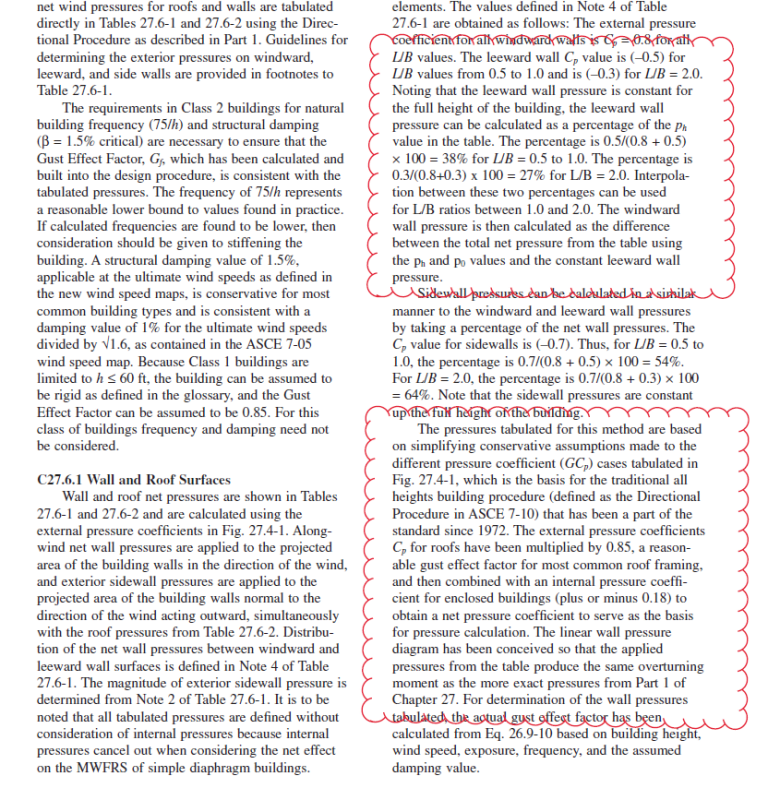Cjopps1337
Civil/Environmental
Hi,
I have a question regarding wind loads. Suppose I have a 400 ft tall building, but I am only analyzing something between floor heights of 20 ft to 30 ft. I understand, qz can be taken at 30 ft. However, why is negative wind load (leeward wall) calculated using qh (h=400 ft)? It does not make sense that negative wind load is constant along entire height of building. Is this accurate?
Note, this is for component and cladding wind load...
I have a question regarding wind loads. Suppose I have a 400 ft tall building, but I am only analyzing something between floor heights of 20 ft to 30 ft. I understand, qz can be taken at 30 ft. However, why is negative wind load (leeward wall) calculated using qh (h=400 ft)? It does not make sense that negative wind load is constant along entire height of building. Is this accurate?
Note, this is for component and cladding wind load...

